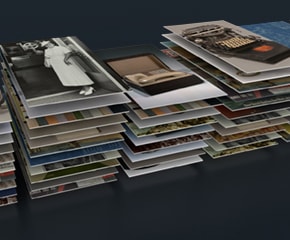1901 Mercedes-Benz Number 5, circa 1955
Add to SetSummary
The 1901 Mercedes, built by the German firm Daimler, was one of the first automobiles with the engine up front rather than under the seat. That gave more room for bigger engines and also allowed the chassis to be lowered for easier entry and better road holding. It set the pattern for future cars.
The 1901 Mercedes, built by the German firm Daimler, was one of the first automobiles with the engine up front rather than under the seat. That gave more room for bigger engines and also allowed the chassis to be lowered for easier entry and better road holding. It set the pattern for future cars.
Artifact
Photographic print
Subject Date
1901
Creators
Place of Creation
Creator Notes
Photographed by Mercedes-Benz Werkphoto, Benz & Cie, Germany
Keywords
Collection Title
On Exhibit
By Request in the Benson Ford Research Center
Object ID
P.1774.X.113
Credit
From the Collections of The Henry Ford. Gift of the Family of Henry Austin Clark, Jr.
Material
Paper (Fiber product)
Technique
Gelatin silver process
Color
Black-and-white (Colors)
Dimensions
Height: 5 in
Width: 8.375 in
Inscriptions
Handwritten on lower left corner under image: Benz #5 Printed under image on lower border: Der Mercedes genannte Daimler-Motorwagen aus dem Jahre 1901, ein auch nach unseren heutigen Bergriffen wirkliches Automobil. /Mit diesem Wagen begann der Siegeslauf des Mercedes (Daimler-Biographie Seite 291) / Bestellnummer: / 22381 / Mercedes-Benz Werkphoto (50) Typed sheet adhered to bottom of image reads: (handwritten:) The First M)ercedes" Car / This "Mercedes" car made its first test run on Christmas Eve 1900. / When the Mercedes car was brought on the market in 1901, designed by / the construction department of the D.M.G. under management of the technical / director, W. Maybach, it outrivalled all other vehicles. The engines of the / Mercedes cars 1901 were built in three different sizes with a rated output / of 8, 16, and 35 H.P. The four gray iron cylinders of the engine were / cast by pairs with one-piece cylinder head, the valves on both sides / being vertically arranged, the crankcase being made of aluminum. / The entire design of the Mercedes car represented a favorable solution / of the modern automobile and has been taken over in its main features / by all world-renowned car manufacturers up to after the war. The / generally adopted characteristics of design were especially the elongated / pressed steel frame, engine at the front, honey-comb radiator, fan / and water pump, gate type gear shifting, transmission lock, use of ball / bearings and so on. This Daimler car was named "Mercedes" after the daughter of the Imperial / Austrian-Hungarian consul-general Emil Jellinek, then member of the Board / of Directors of the D.M.G. and big customer of Mercedes cars. The Mercedes car was based to a large extent on the existing Daimler designs and / represented the first "modern automobile". Handwritten in pencil on back of image: [cropping numbers] and April 1955





